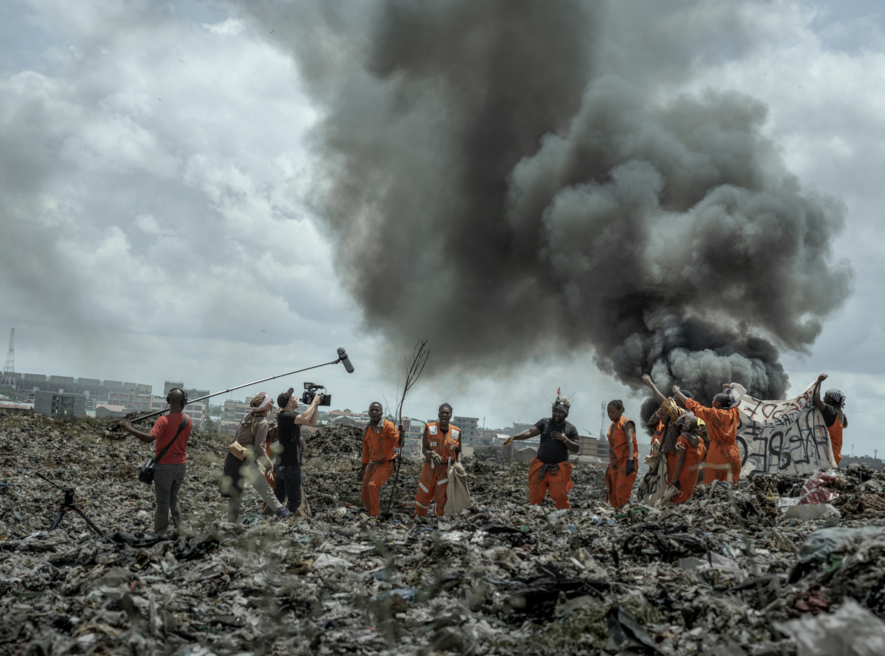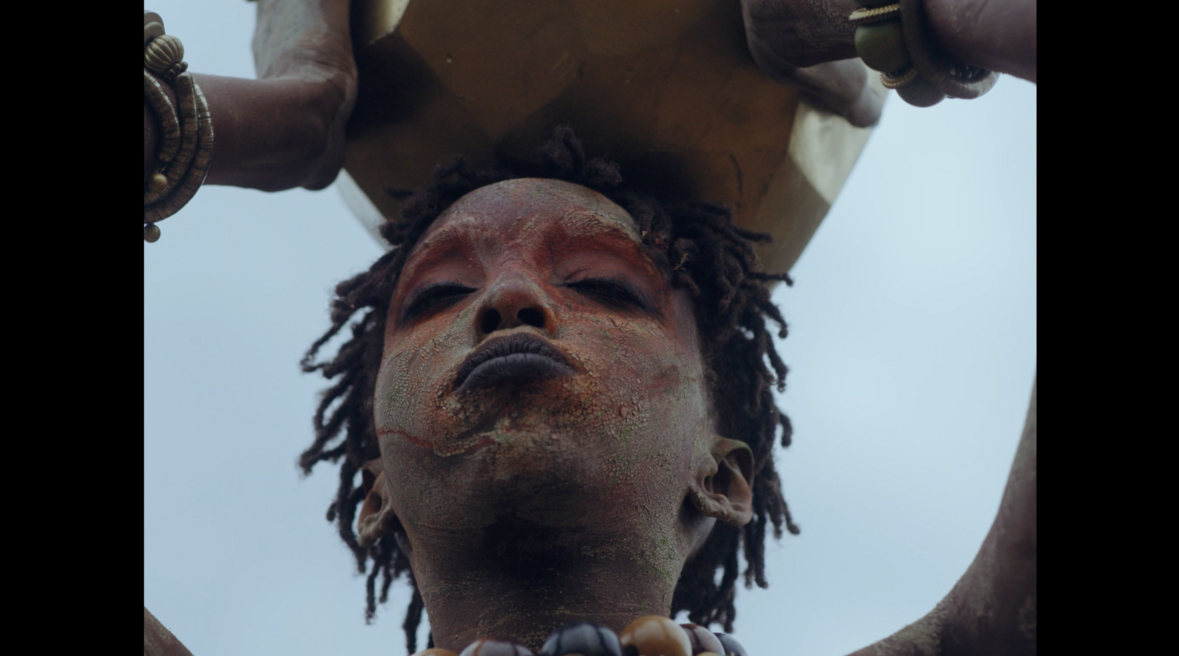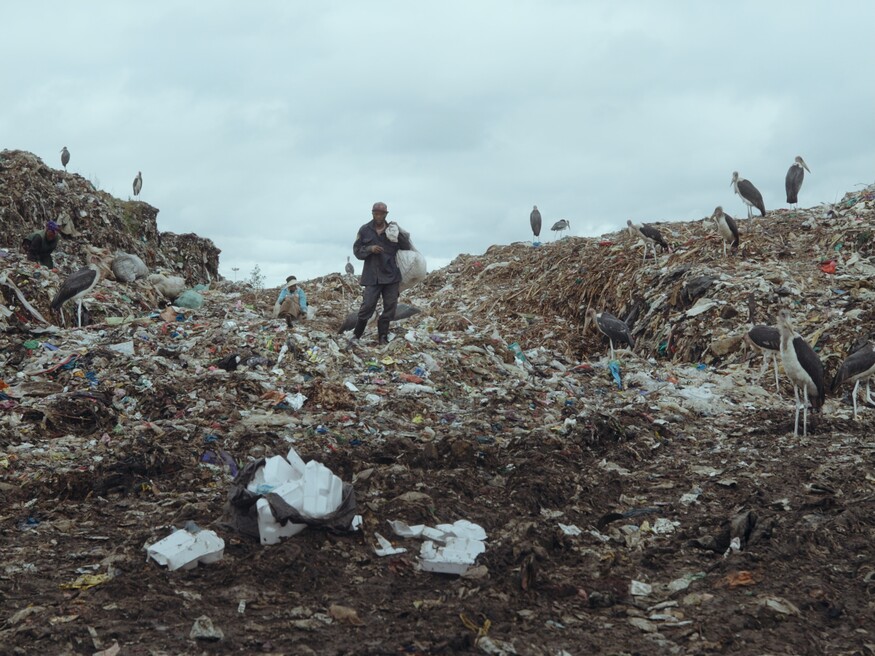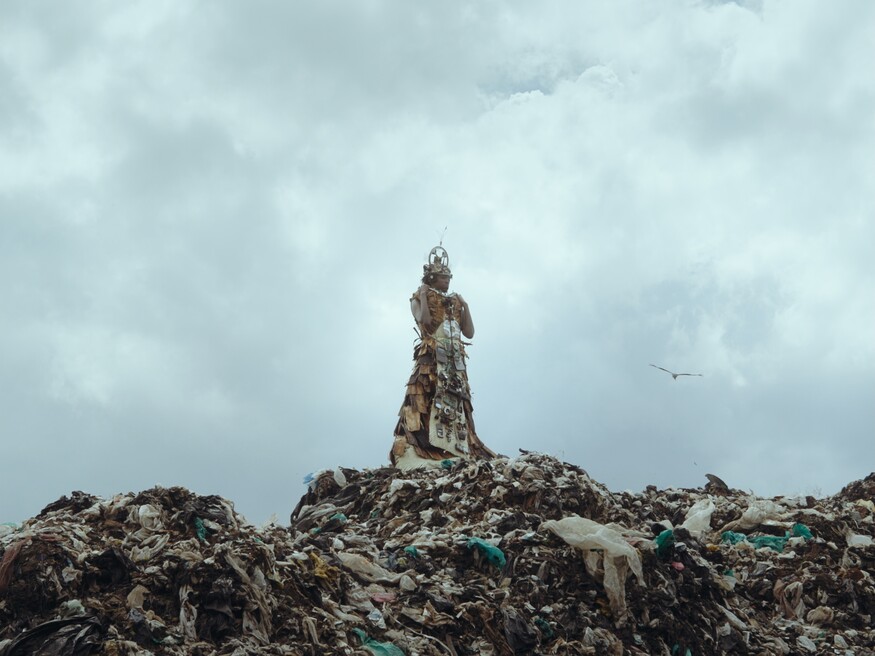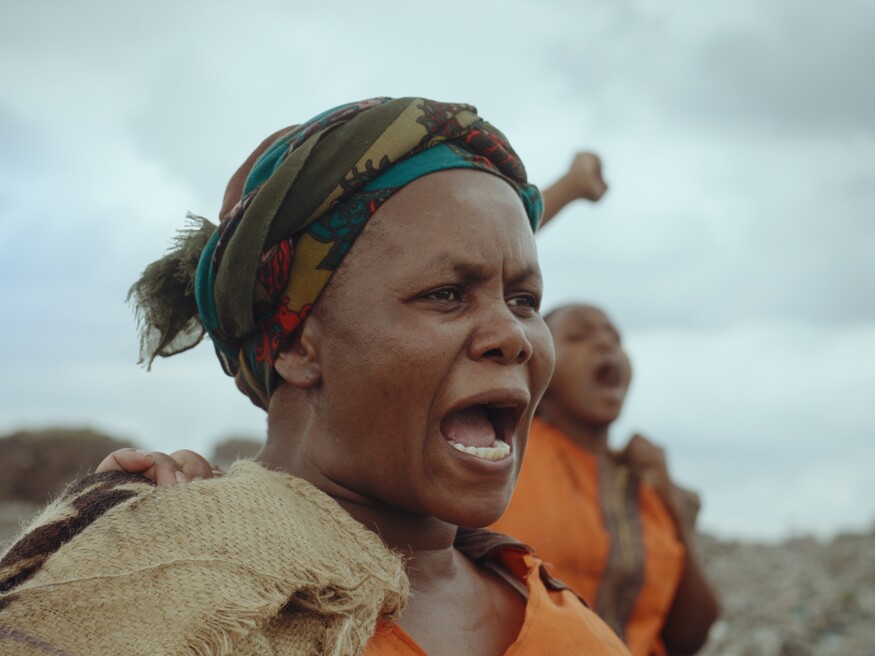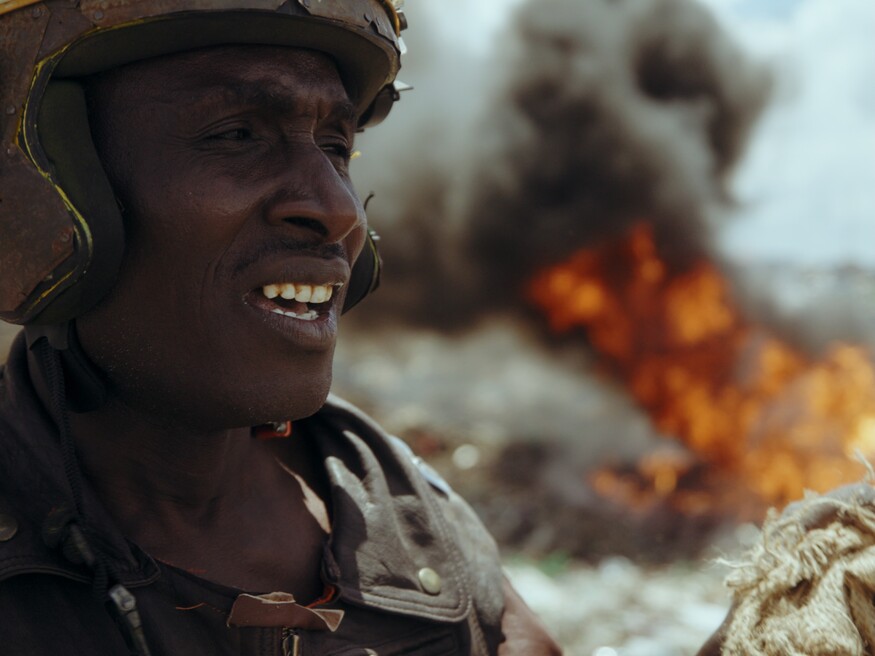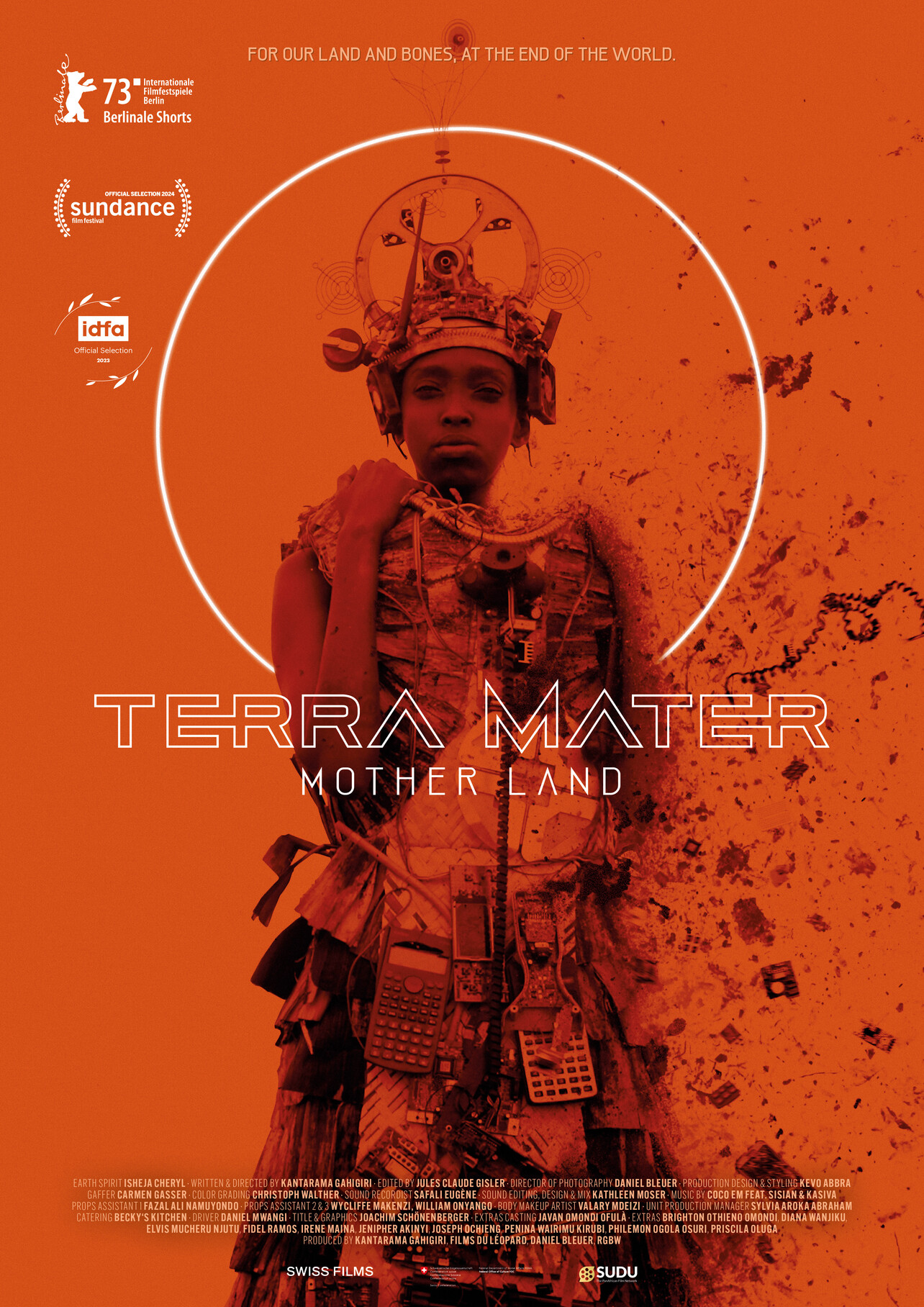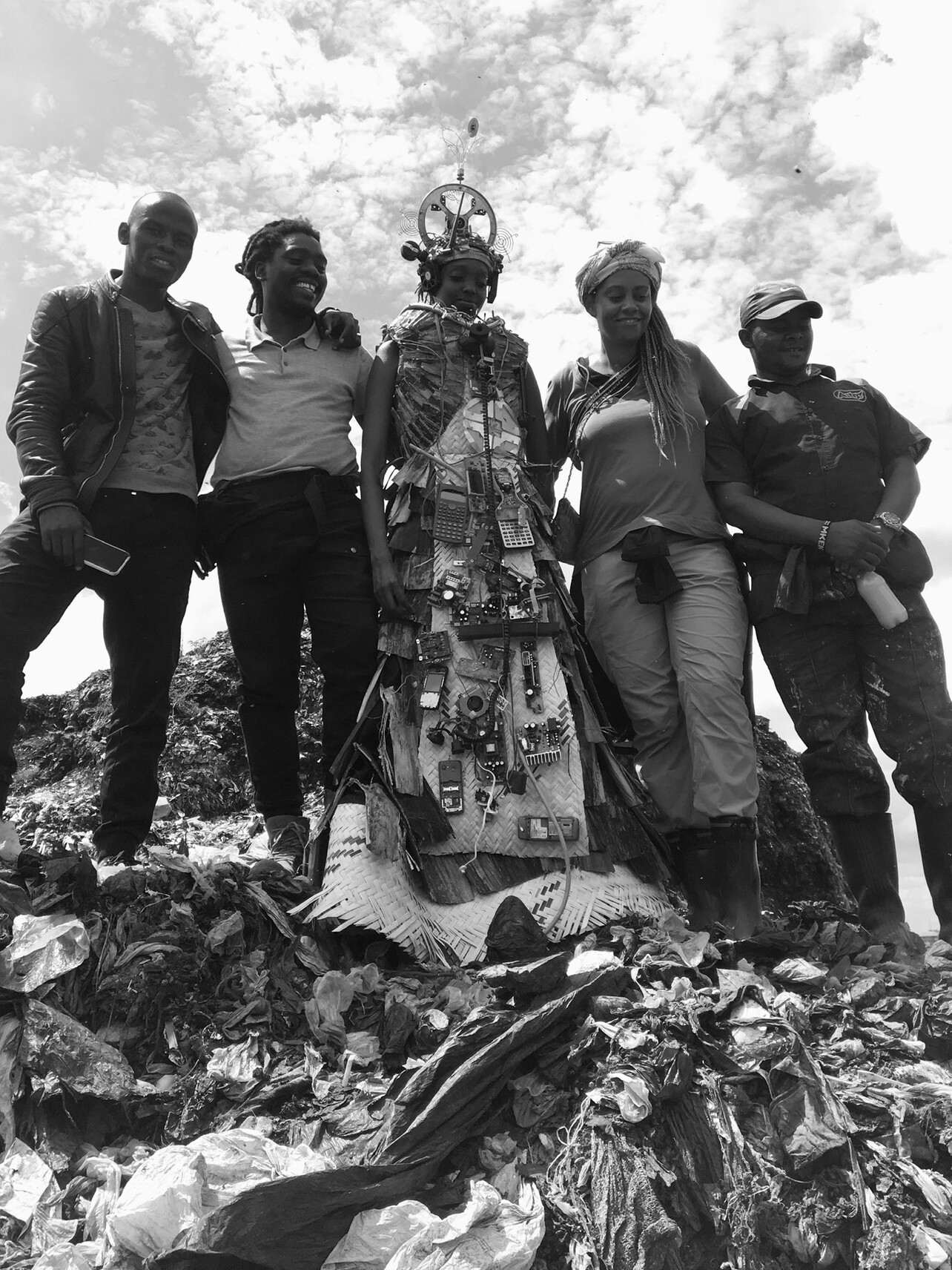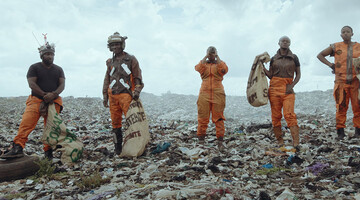
Kantarama Gahigiri about the approach to time, hopefulness and her Residency at MQ
The artist Kantarama Gahigiri, invited in cooperation with this human world, is currently one of eight Artists-in-Residence at MuseumsQuartier. In conversation with Xandi Egginton, co-director of this human world - International Human Rights Film Festival, the artist gives an insight into her work.
Kantarama, in your work, I notice you are drawn to slow motion. I am curious about what that form and method of capturing space gestures at, and what it allows you to open up aesthetically and symbolically. At the very beginning of "Terra Mater", for example, it wasn’t clear to me that the camera was filming in slow motion because everything was rather still. Only when I saw little hints of movement did I realize I was attuned to an alternate rendering of space.
I have been reflecting on what time is, on what it means in different cultures. I am of mixed cultures myself, originally from Switzerland and Rwanda. I have been exposed to both since I was a child and have traveled between Africa and Europe my whole life. So the idea of a different approach to time, be it linear or circular, how it conditions your life, has always been there and has always challenged me. I notice it especially upon entering Europe, a more occidental northern system. You have to adjust to a way of handling time here. And then you re-enter Africa at large and it is a different approach, a different rhythm. It is a bodily experience to make that adjustment. For instance, there is something very interesting in Kinyarwanda, the Rwandan language, that you can also find in the neighboring languages. We use the same word for “yesterday” and “tomorrow.” The word is “ejo.” Basically it could be interpreted as not now, and if you know that concept then you understand something a little bit more circular about time. When I was imagining the two films (Ethereality and Terra Mater), but Terra Matter especially, I was trying to find a non-occidental and a non-colonial way of approaching storytelling, and this is why I wanted to layer different textures, different rhythms, and the use of slow motion allowed me to extend and compress time, and to bring the viewer into some sort of state of suspension.
It is a visceral experience, especially when you see how that treatment of time affects not only humans in "Terra Mater", but also the non-human dimensions, like the rustling of wind through trash. I was brought into a different mode of perception, which I found really provoking.
I'm glad you found it sensory because it was my intention to expand the viewing experience and make Terra Mater something more than a purely intellectual process where I was “just” telling the viewer something. My intention was to create a sensory, physical experience. As you mentioned, one of the methods was to play with the gathering and stretching of time. Another was how we designed the rather futuristic soundscape: Terra Mater uses non-verbal, but there's a lot happening that emanates from the elements, the animals, the pollution itself. It is also a commentary on the spaces around us and how we relate to them. Sound, speed and other narrative tools are our means of mapping these philosophical concepts of circularity and interconnectedness. It's about shifting the focus of our experience: out of the spiritual and into sensory intelligence.
How do you see hopefulness and offering an imaginary for what is possible as important in your work and/or in other works you admire? How do you intend to continue tapping into that hopefulness?
Being from Rwanda… Well, if you're familiar with the history, you know that we went through a major event in ‘94—the genocide against the Tutsi—and what this event has taught me is that, beyond the horror of what happened, beyond loss and despair, people are extremely resilient. Humans are able to redefine and rebuild, like phoenixes who rise from the ashes. If you visit Rwanda today, you see this is a country that has been rebuilt. It’s inspiring. On another layer, there are many teachings to be learned from local indigenous people all over the world, teachings that have created symbiotic ways of sustaining the environment. Perhaps in today’s world we can get inspired by their dynamics and adjust them to where we are now. We can take the traditional and the technological and redefine something more virtuous. This would be the ideal way to go, and I still remain hopeful because I think human beings have a very, very strong capacity to adapt, and a strong will to survive.
Thank you for that. I find that hopefulness is too often undervalued nowadays. As it concerns your next projects, I am interested, generally, to hear how a residency such as this one can open up pathways to develop the work you've been doing over the course of your filmmaking career.
Having the opportunity to be welcomed in a space like MuseumQuartier and the Q21 Residencies is a big luxury and I am very grateful to be here. I have been based in Nairobi, and in March and April we had a very strong climate event where there was lots of rain and flooding. More than 500,000 people were displaced in the region—meaning Kenya, Tanzania, Burundi—and a few months later, in June and July, there was a very big political uprising. It has been a very intense year. As an artist, it is important to be in touch with your times, but it is also important to have a safe place to work. The residency at MQ is allowing me now to draw from this year's very intense experiences. I am able to brainstorm, to explore links between climate related issues and politics, and I hope to alchemize and transmute it all into a new piece of art. I also appreciate the fact that I can connect with what other people are doing here, not just at MQ, but in the broader community. See what the tendencies are nowadays, what people are concerned with, and see correspondences and inspirations in other people’s work and life.
____________________________________________________________________________________________________________
Xandi Egginton (he/they) is the co-director of this human world - international human rights film festival. They are an Austrian-U.S. American multimedia artist and curator who received their B.A. from Johns Hopkins University in cultural anthropology. They have written for BmoreArt Magazine and the Johns Hopkins Newsletter among other publications, and they are the author of the novella 3200 BOHEMIAN AVE (2024).
Kantarama Gahigiri is a Rwandan artist, writer and director. She is an alumna of La Fabrique Cinéma (Cannes), Le Moulin d’Andé, and AiR Residencies. As of today, Kantarama pursues her passion immersed in an exploration of identity, sovereignty and on-screen representation. She works between East Africa and Switzerland, premiered her films at Locarno Film Festival, Berlinale, IDFA, Sundance, and garnered a Swiss Academy Award Nomination in 2024 (with Terra Mater). Her recent projects revolve around migration and the sense of belonging (Ethereality, winner of the Best Short Doc Award at FESPACO, winner of this human world EXPANDED SHORTS JURY AWARD in Vienna), or the ties between colonization, capitalism and climate change (Terra Mater, Postcard From The Future - Mother Earth).
film stills © Kantarama Gahigiri
